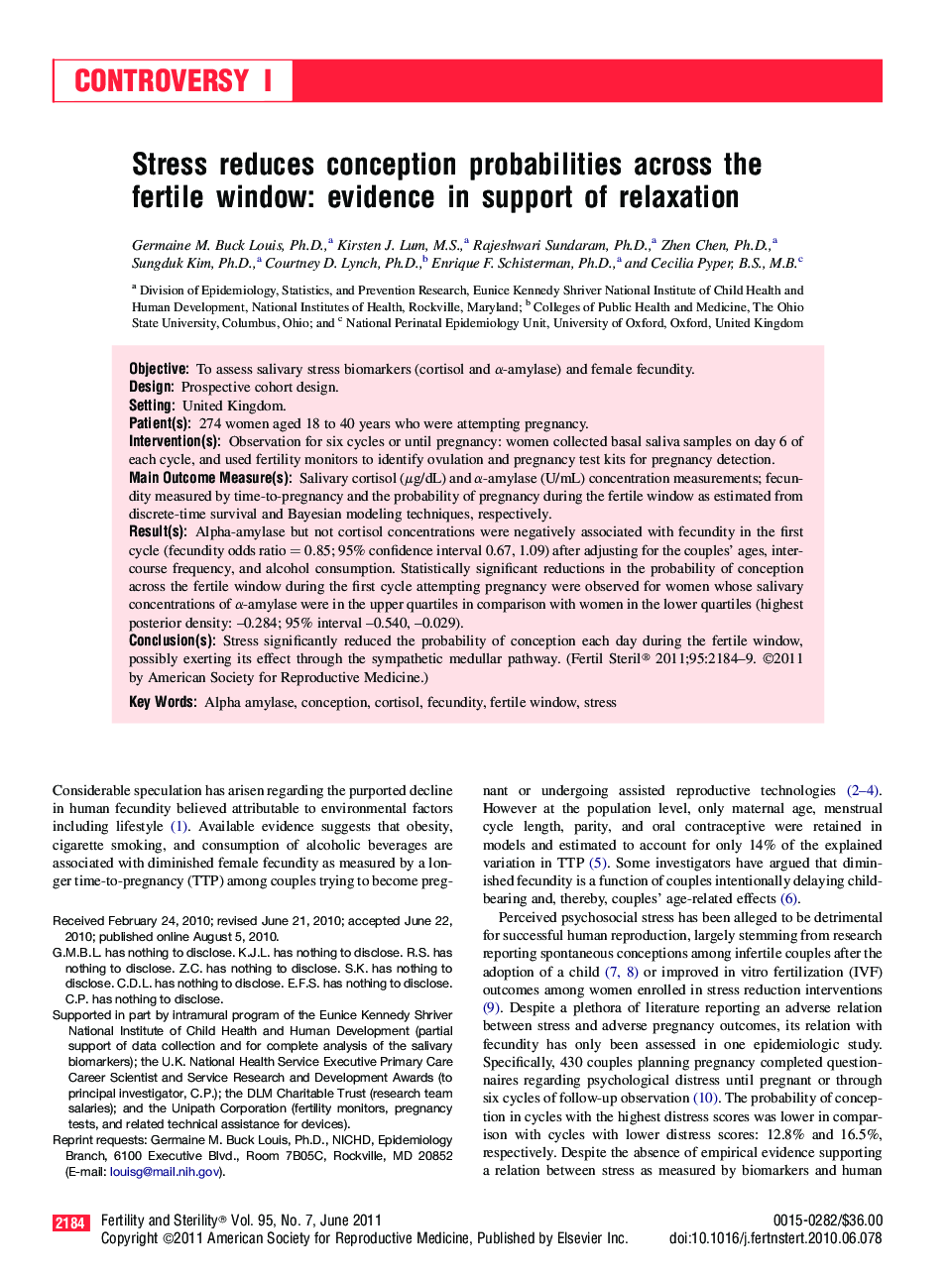| Article ID | Journal | Published Year | Pages | File Type |
|---|---|---|---|---|
| 3937750 | Fertility and Sterility | 2011 | 6 Pages |
ObjectiveTo assess salivary stress biomarkers (cortisol and α-amylase) and female fecundity.DesignProspective cohort design.SettingUnited Kingdom.Patient(s)274 women aged 18 to 40 years who were attempting pregnancy.Intervention(s)Observation for six cycles or until pregnancy: women collected basal saliva samples on day 6 of each cycle, and used fertility monitors to identify ovulation and pregnancy test kits for pregnancy detection.Main Outcome Measure(s)Salivary cortisol (μg/dL) and α-amylase (U/mL) concentration measurements; fecundity measured by time-to-pregnancy and the probability of pregnancy during the fertile window as estimated from discrete-time survival and Bayesian modeling techniques, respectively.Result(s)Alpha-amylase but not cortisol concentrations were negatively associated with fecundity in the first cycle (fecundity odds ratio = 0.85; 95% confidence interval 0.67, 1.09) after adjusting for the couples' ages, intercourse frequency, and alcohol consumption. Statistically significant reductions in the probability of conception across the fertile window during the first cycle attempting pregnancy were observed for women whose salivary concentrations of α-amylase were in the upper quartiles in comparison with women in the lower quartiles (highest posterior density: –0.284; 95% interval –0.540, –0.029).Conclusion(s)Stress significantly reduced the probability of conception each day during the fertile window, possibly exerting its effect through the sympathetic medullar pathway.
